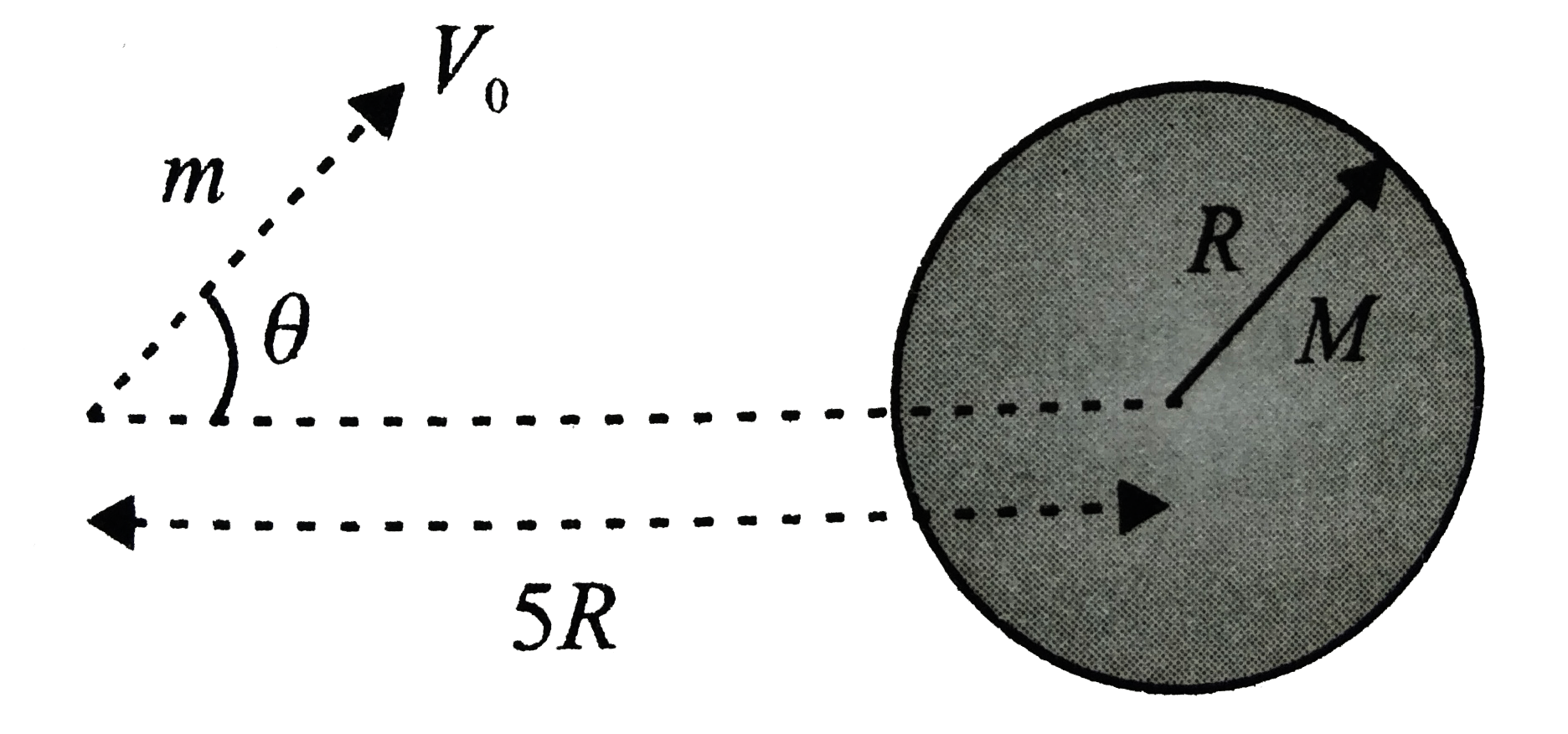Subjective from CENGAGE PHYSICS Chapter 8 GRAVITATION for Class 11
| Class 11 | PHYSICS |
| Chapter | GRAVITATION |
| CENGAGE PHYSICS | Subjective |
| Medium | English |
| Academic Year | 2023-2024 |
Question 1
Calculate the velocity with which a body must be thrown vertically upward from the surface of the earth so that it may reach a height of 10R, where R is the radius of the earth and is equal to 6.4×106m. (Given: Mass of the earth =6×1024kg, gravitational constant G=6.7×10−11Nm2kg−2) View SolutionQuestion 6
A spaceship is sent to investigate a planet of mass M and radius R. While hanging motionless in space at a distance 5R from the centre of the planet, the spaceship fires an instrument package of mass m, which is much smaller than the mass of the spaceship. For what angle θ will the package just graze the surface of the planet?
 View Solution
View SolutionQuestion 7
Ravi can throw a ball at a speed on the earth which can cross a river of width 10m. Ravi reaches on an imaginary planet whose mean density is twice that of the earth. Find out the maximum possible radius of the planet so that if Ravi throws the ball at the same speed it may escape from the planet. Given radius of the earth =6.4×106m. View SolutionQuestion 10
A satellite is to be put into an orbit 600km above the surface of the earth. If its vertical velocity after launching is 2400m/s at this height, calculate the magnitude and direction in the impulse required to put the satellite directly increase. The mass of the satellite is 60kg and the radius of the earth is 6400km. Take g=10ms−2View SolutionQuestion 11
A pair of stars rotates about a common centre of mass. One of the stars has a mass M and the other m. Their centres are a distance d apart, d being large compared to the size of either star. Derive an expression for the period of revolution of the stars about their common centre of mass. Compare their angular momenta and kinetic energies. View SolutionQuestion 12
The small dense stars rotate about their common centre of mass as a binary system, each with a period of 1 year. One star has mass double than that of the other, while mass of the lighter star is one-third the mass of the Sun. The distance between the two stars is r and the distance of the earth from the Sun is R, find the relation between r and R. View SolutionQuestion 14
An artificial satellite (mass m) of a planet (mass M) revolves in a circular orbit whose radius is n times the radius R of the planet in the process of motion the satellite experiences a slight resistance due to cosmic dust. Assuming the force of resistance on satellite to depend on velocity as F=av2 where 'a' is a constant caculate how long the satellite will stay in the space before it falls on to the planet's surface. View Solution